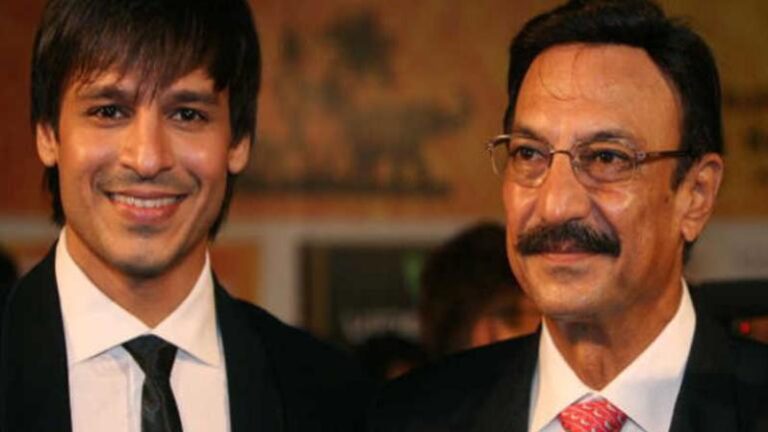Terence Lewis: The Trailblazing Choreographer Transforming Dance in India
Terence Lewis is one of India’s most revered choreographers, celebrated for his innovative choreography, contemporary style, and contributions to popularizing dance in India. Known for his expertise in modern and contemporary dance forms, Lewis has made an indelible mark on Indian dance, working in Bollywood, theatre, and reality TV. His journey from a young, passionate dancer to one of the most respected choreographers in the industry exemplifies dedication, artistry, and an undying love for dance.
This article explores Terence Lewis’s early life, his rise to fame, his signature style, and his impact on Indian dance culture.
Terence Lewis : Early Life and Background
Childhood and Introduction to Dance
Terence Lewis was born on April 10, 1975, in Mumbai, Maharashtra, to a middle-class family with eight siblings. Raised in the suburbs of Mumbai, Terence grew up in a conservative family that initially encouraged him to pursue a stable career. However, his passion for dance and performance was undeniable. As a child, he was fascinated by music and movement, and he would often participate in school events and local dance competitions.
Despite financial constraints, Terence’s family supported his aspirations and helped him join dance classes. His dedication to learning and his natural talent set him apart from other young dancers. With a desire to pursue dance professionally, Terence eventually joined the Danceworx Academy in Mumbai, a step that would pave the way for his career.
Academic Pursuits and Further Training
Terence pursued his higher education with a focus on academics, obtaining a degree in Hotel Management from IHM Mumbai. However, his commitment to dance remained unwavering. He was determined to gain formal training, and he received a scholarship to train in jazz, ballet, and contemporary dance in New York at the prestigious Alvin Ailey American Dance Theater and the Martha Graham School of Contemporary Dance. His time in New York allowed him to master Western dance styles and gave him exposure to international standards of choreography, which he would later integrate into his work in India.
His training in Western styles, combined with his understanding of Indian dance forms, shaped his unique choreography style that blends global techniques with Indian culture.
Terence Lewis Rise to Fame as a Choreographer
Early Work in Bollywood and Theatre

Upon returning to India, Terence Lewis began his career as a choreographer by working on various Bollywood projects, stage performances, and music videos. His early choreography work was noticed for its energy and modern appeal, setting him apart from traditional Bollywood choreographers. His approach brought a fresh perspective to Indian choreography, incorporating Western techniques and more structured routines that were new to Bollywood.
Apart from Bollywood, Terence made his mark in the world of theatre. He collaborated on numerous stage productions, choreographing dance sequences for musicals and plays that required an artistic and modern touch. His work in theatre allowed him to showcase his versatility and provided him with a platform to experiment with different dance forms.
Breakthrough in Bollywood and Major Projects
Terence’s major breakthrough in Bollywood came with the film Lagaan (2001), where he choreographed the song “Mitwa.” His work on Lagaan, which was nominated for an Academy Award, was widely appreciated for its cultural authenticity and fluid choreography. Following this, he worked on films such as Jhankaar Beats (2003) and Goliyon Ki Raasleela Ram-Leela (2013), collaborating with some of Bollywood’s biggest names.
In addition to his film work, Terence continued to build his reputation in dance. His innovative choreography style, which seamlessly blended Western and Indian techniques, resonated with audiences and helped him establish a distinct identity in the industry.
Signature Dance Style and Choreography Techniques
Fusion of Contemporary and Classical Styles
One of Terence Lewis’s defining qualities is his ability to blend contemporary dance with classical Indian forms, creating a unique and dynamic choreography style. His routines are known for their grace, precision, and emotional expression, often telling a story or evoking deep emotions. By fusing Indian classical dance elements with Western contemporary techniques, he has created a signature style that reflects both his cultural roots and his international training.
Terence’s choreography often includes elements of ballet, jazz, and contemporary dance, with an emphasis on clean lines, fluid movement, and emotional storytelling. His approach focuses on body awareness, spatial movement, and dramatic expression, making his routines visually compelling and artistically rich.
Focus on Storytelling Through Dance
A distinctive feature of Terence Lewis’s choreography is his emphasis on storytelling. Whether through a Bollywood dance number, a reality show performance, or a theatrical production, his choreography tells a story, capturing the essence of the characters and the narrative. Terence’s background in theatre and his exposure to Western contemporary dance have contributed to this storytelling approach, allowing him to convey emotions through movement.
His work is characterized by its theatricality and visual appeal, with each dance piece designed to resonate with audiences on an emotional level. This focus on storytelling has made his routines impactful, as they go beyond movement to express deeper themes and narratives.
Terence Lewis Success on Reality TV and Mentorship
Judge on Dance India Dance

Terence Lewis’s career reached new heights when he joined Dance India Dance (DID) as a judge and mentor. His presence on the show brought a level of sophistication and expertise that elevated the competition. As a judge, Terence was known for his constructive feedback, technical insights, and supportive mentorship, making him a favorite among contestants and audiences alike.
Dance India Dance provided Terence with a platform to showcase his expertise in contemporary dance and popularize the form in India. His role on the show allowed him to mentor young dancers and introduce new techniques, raising the bar for dance reality shows in India. Terence’s presence on DID helped him reach a wider audience and established him as a household name in Indian dance.
Nach Baliye and India’s Best Dancer
Following his success on Dance India Dance, Terence Lewis went on to judge other popular dance reality shows, including Nach Baliye and India’s Best Dancer. His mentorship on these shows showcased his dedication to nurturing young talent and promoting dance as an art form in India. Terence’s expertise in dance and his empathetic approach to judging made him one of the most respected figures on Indian television.
On India’s Best Dancer, Terence became known for his detailed feedback and encouragement of contemporary and experimental dance styles. His presence on the show reinforced his role as a mentor who was committed to helping dancers explore their potential and push their creative boundaries.
Terence Lewis Dance Academy (TLDA)
Establishing a Center for Dance Excellence
In 1998, Terence Lewis established the Terence Lewis Dance Academy (TLDA) in Mumbai to provide structured training in dance and create a platform for aspiring dancers to develop their skills. The academy offers courses in contemporary, ballet, jazz, and Indian folk dance, emphasizing technical proficiency, body conditioning, and creative expression. TLDA has become one of India’s premier dance academies, known for its high standards and quality training.
Through TLDA, Terence has been able to mentor countless dancers, many of whom have gone on to achieve success in Bollywood, theatre, and dance reality shows. The academy has also collaborated with international dance schools, allowing students to gain exposure to global dance standards and participate in workshops conducted by renowned choreographers.
Promoting Dance Education in India
Terence Lewis is a strong advocate for dance education, and through TLDA, he has contributed to the development of professional dance training in India. His efforts to introduce structured dance education and his emphasis on discipline, technique, and creativity have elevated the standards of dance in the country. By promoting dance as a serious profession, Terence has encouraged aspiring dancers to pursue their passion with commitment and dedication.
His work in dance education reflects his belief that dance can be transformative, providing individuals with a means of self-expression, confidence, and emotional healing. His efforts to bring contemporary dance to a wider audience have made him a pioneer in India’s dance education landscape.
Impact on Indian Dance and Popular Culture
Elevating Contemporary Dance in India
Terence Lewis’s work has had a significant impact on popularizing contemporary dance in India. Before his entry into the mainstream, contemporary dance was largely unfamiliar to Indian audiences. Through his performances, choreography, and appearances on television, Terence has introduced audiences to contemporary dance forms, making them accessible and relatable.
His influence has inspired a new generation of dancers to explore contemporary dance and pursue it as a career. By bringing global dance forms to Indian audiences, Terence has helped create a cultural shift, where contemporary dance is now respected and widely appreciated in India.
Mentorship and Empowering Young Dancers
One of Terence Lewis’s most enduring legacies is his role as a mentor and his dedication to empowering young dancers. His guidance on reality shows, his work at TLDA, and his commitment to providing opportunities for emerging talent have made him a role model in the Indian dance community. Many of his students and mentees have achieved success in dance competitions and gone on to build careers in the industry.
Through his mentorship, Terence has fostered a culture of encouragement and support, inspiring dancers to take risks and challenge themselves. His impact on young dancers is evident in the thriving dance scene in India today, where many consider him an inspiration and a guiding force.
Conclusion: Terence Lewis’s Lasting Legacy in Dance
Terence Lewis’s journey from a young boy with a dream to one of India’s leading choreographers and dance educators is a testament to his passion, resilience, and dedication to the art of dance. His innovative choreography, ability to blend contemporary and classical styles, and commitment to storytelling have redefined dance in Indian cinema and television. By introducing contemporary dance to a mainstream audience, he has expanded the boundaries of Indian dance, making it more inclusive and expressive.
Through his role as a mentor on reality TV, the founding of the Terence Lewis Dance Academy, and his constant promotion of dance education, Terence has transformed the Indian dance landscape, inspiring countless dancers to follow their passion. His work has raised the standard of dance in India and popularized contemporary dance, bridging cultural gaps and inspiring future generations of dancers and choreographers.
Terence Lewis’s legacy is one of creativity, mentorship, and an undying commitment to dance as an art form. As he continues to innovate and push boundaries, his influence on Indian dance culture is sure to endure, making him a true icon in the world of dance and a source of inspiration for future generations.



